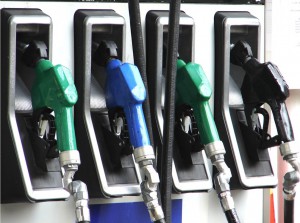The price of gasoline at retail pumps around the nation has tumbled since Labor Day as the price of crude oil remains low across the globe and refineries begin switching over to winter blends, which are less expensive to produce, according to AAA.
At the same time, the surge in driving in recent months has cut into inventories, but stock remain high and crude oil producers continue to produce despite low prices, the Energy Information Agency reports.
AAA reported that gas prices have fallen for 11 of the past 12 days, reaching today’s average of $2.18 per gallon. Drivers are saving two cents per gallon compared with one week ago, but are paying five cents per gallon more on the month.
Overall gas prices remain lower than last year due to the relatively low price of crude oil with drivers saving an average of 18 cents per gallon compared to a year ago, AAA said.
The national average price for unleaded gasoline is expected to keep moving lower as we head into fall barring any unexpected disruptions in supply or spikes in the price of crude oil, AAA analyst said.
(Ford moving small car production to Mexico. For more, Click Here.)
Pump prices typically decline during this time of year due to lower driving demand after the busy summer driving season has concluded and the aforementioned changeover from to winter-blend gasoline, which takes place in many parts of the country starting on Sept. 15.
The EIA said drivers will continue to benefit from an oversupplied market and AAA predicts that consumers could experience national average prices below $2 at the pump if the price of crude oil remains relatively low and refineries are able to conduct planned seasonal maintenance without issue.
Average gas prices in seven states are already below $2 per gallon. The list includes South Carolina where gasoline prices average $1.91 per gallon, Alabama at $1.94, Mississippi at $1.97, New Jersey at $1.98, Texas at $1.98 and Tennessee Virginia where prices have dropped to $1.99.
(Click Here for more about a fatal crash involving Tesla’s Autopilot in China.)
The biggest weekly decreases in price are seen in Indiana where prices have dropped by 11 and Michigan where prices have fallen 10 cents per gallon.
Oil prices briefly spiked last week due to the release of an EIA report that stated U.S. crude inventories fell 14.5 million barrels, but quickly retreated when inventory numbers were attributed to import disruption due to tropical storm Hermine. WTI opened this week trading lower, following news that the U.S. oil rig count increased for the 10th consecutive week and the sustained strength of the U.S. dollar.
Traders will continue to keep an eye on discussions surrounding the upcoming OPEC meetings and the possibility of member and non-member countries agreeing to a production freeze. At the close of Friday’s formal trading session on the NYMEX, WTI was up $1.74 to settle at $45.88 per barrel.
(To see more about Uber unleashing its driverless test fleet in Pittsburgh, Click Here.)
Prospects of voluntary curbs on production by OPEC appear to have faded. At the close of last week’s formal trading the price of crude oil futures settle at $45.88 per barrel.

